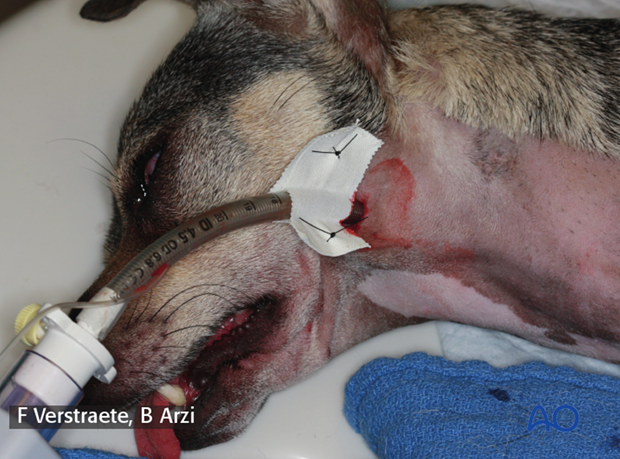Pharyngostomy intubation
1. Patient preparation
The patient is placed in lateral recumbency (exposing the nonfractured side of the mandible) and anesthetized with an oral endotracheal tube.
In situations with bilateral mandibular fractures either side may be used.
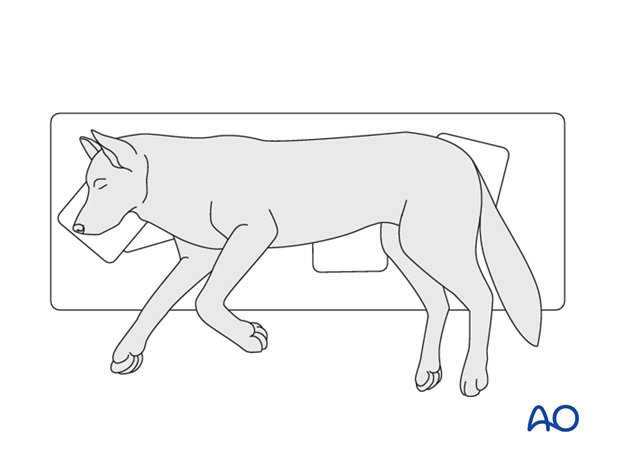
2. Incision site identification
The hyoid apparatus is identified and palpated from the inside of the oral cavity.
The correct positioning of the endotracheal tube (ET) is in front of the epihyoid bone, just ventral to the caudal aspect of the nonfractured side of the mandible.
The tip of a forceps (curved Kelly or Carmalt) or the surgeon's index finger is used to create a visible bulge of the skin to identify the placement of the incision.
Note: The hypoglossal nerve, lingual artery and linguofacial vein are just caudal to the epihyoid bone and must be avoided.
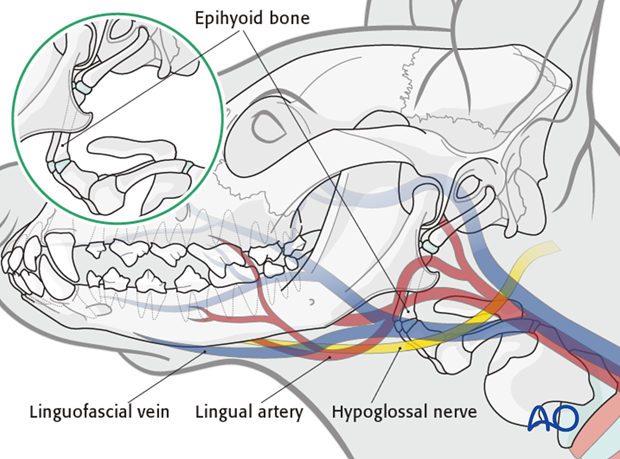
3. Exposure
A 1-2 cm skin and subcutaneous incision is made with a scalpel blade over the bulge.
Blunt dissection is performed to the pharyngeal mucosa and the tip of the forceps or finger is visualized.
The pharyngeal mucosa is incised avoiding any neurovascular structures.
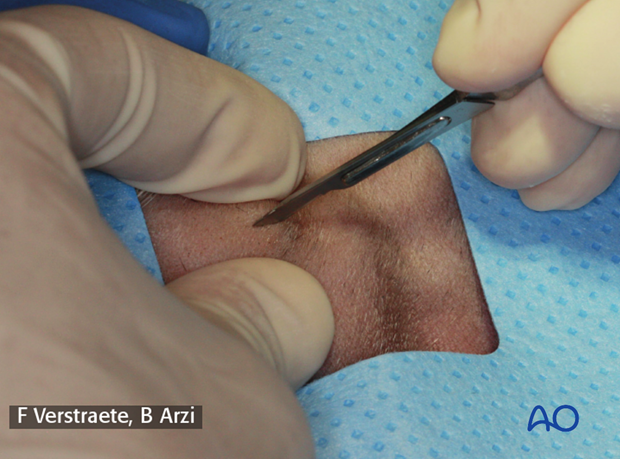
4. Tube placement
The endotracheal tube is grasped from the inside of the oral cavity with the tip of the forceps or fingers.
Attention should be paid not to crush the tip of the tube.
Note: the tube can be lubricated to decrease tissue trauma during insertion.
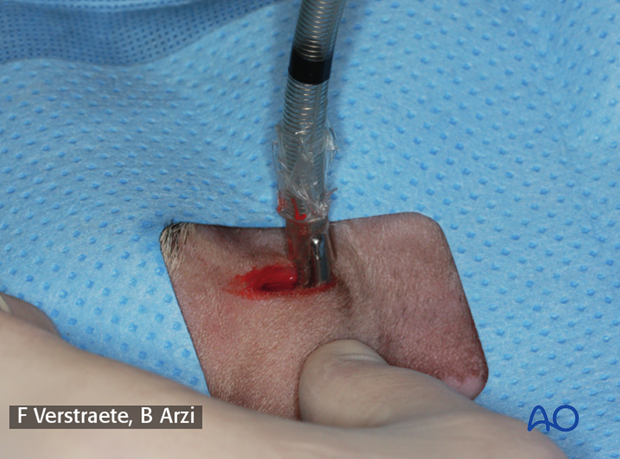
The pharyngeal tube is gently pulled into the oral cavity.
It is important to ensure an adequate anesthesia depth of the patient before removing the orally placed tube and replace it by the pharyngeal one.
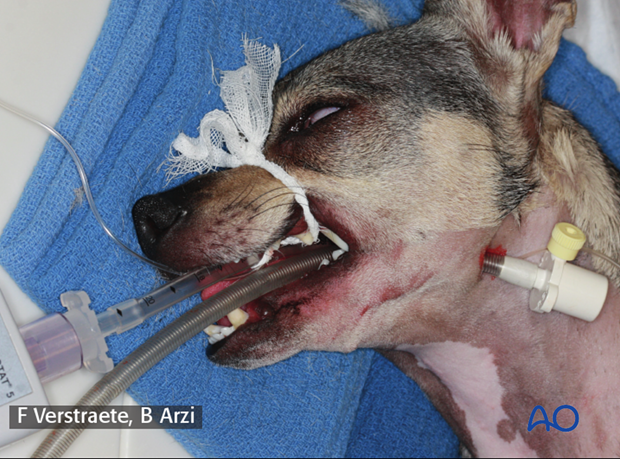
The pharyngeal placed tube is retroflexed and positioned into the trachea.
To facilitate the insertion, the tube can be pulled at the incision site while simultaneously intubating. Another option to help in the positioning, is to use a wire enforced endotracheal tube.
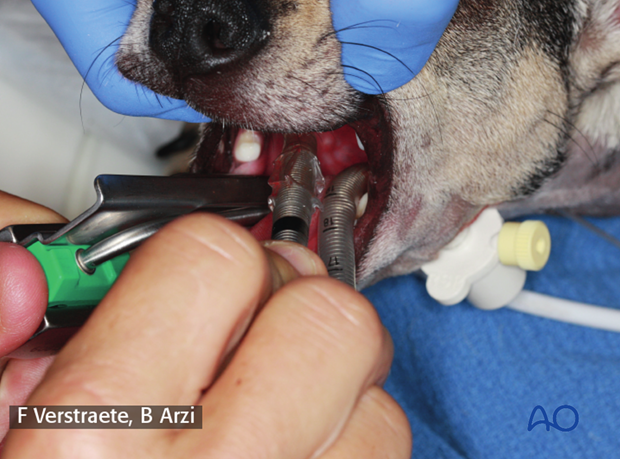
The pharyngeal tube is secured with tape sutured to the skin.
